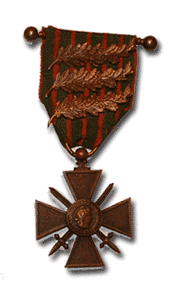United States Air Service
USAS HistorySummary 1917-1918 Lafayette Escadrille
N.124/Spa.124 1st Observation
1st, 12th, 50th, 88th 1st Pursuit Group
27th, 94th, 95th, 147th 1st Bombardment
96th, 11th, 20th 2nd Pursuit Group
13th, 22nd, 49th, 139th 3rd Pursuit Group
28th, 93rd, 103rd, 213th 4th Pursuit Group
17th, 148th, 25th, 141st 5th Pursuit Group
41st, 138th, 638th 3rd Air Park
255th. List of Aces
United States Naval Aviation
US Naval AviationUnited States Marine Corps Aviation
US Marine AviationAircraft
 Nieuport 28
Spad VII
Spad XIII
Fokker Dr.1
Albatros D.Va
Fokker D.VII
Nieuport 28
Spad VII
Spad XIII
Fokker Dr.1
Albatros D.Va
Fokker D.VII
Website: Atlanta SEO
E-mail us

World War One Overview
World War I was known as the War to End All Wars, at least until World War II got under way. The war started all with the cock of a pistol on June 28, 1914 which claimed the life of Austro-Hungarian Archduke Franz Ferdinand and his wife Sophie as they toured through Belgrade, then in Austria-Hungary. Ferdinand was next in line for the throne of Austria-Hungary and the man who had shot him was Serbian. Austria-Hungary declared war on Serbia. Russia mobilized. Germany mobilized and threatened war against Russia if she did not stop the mobilization process. The Russians couldn't or didn't stop the mobilization and so the Germans went to war too. France was allied with Russia and Great Britain allied with France. Within a matter of days, the larger nations of Europe were embroiled in a horrible war.
On the Western Front, the Germans sliced neatly through Belgium, capturing all but a small western end along the English Channel and then wheeled south toward Paris, pushing back the French Armies and the small British Expeditionary Force approaching to 35 miles of Paris before the front was stabilized during the Battle of the Marne in September, 1914.
The French and British and Belgians managed to push the Germans back away from Paris where the Western Front stabilized into the infamous trench warfare for the next few years crowned by battles of utter devastation such as the Battle of Verdun, the Battle of the Somme, the introduction of gas warfare, flamethrowers, air to air rockets, tanks and superguns like the Wilhelm Geschutz that shelled Paris from 68 miles north of the city.
On the Eastern front, the Germans and Austro-Hungarians fought with the Russians eventually knocking out the Russians in December, 1917. The Germans started transferring over the divisions and perhaps would have ended the war if the Americans had not started to join the war.
Much to the joy of the Allies, the United States formally declared war on April 6, 1917. Americans signed up and Americans were also drafted. And then after a delay of several months, they started to make the trip over the ocean.
When the American flyers went to combat, they were flying in direct support of the several hundred thousand strong American First Army under General John J. ("Blackjack") Pershing and the tough battles they fought at Chateau Thierry, Belleau Wood and the Meuse Argonne area starting in the second half of 1918 until the war ended a few months later at the 11th hour of the 11th day of the 11th month of 1918.
After a slow start, both the US Army and the US Army Air Service fought hard, bravely and valiantly and seemingly incessantly.
Even before the United States formally entered the war, Americans were volunteering to fight for Great Britain and also for France. The most famous of the American volunteers were the pilots who made up the Lafayette Escadrille, probably the most famous air squadron in history. It is worth noting that while an estimated 4,000 Americans, including the later famous writer William Faulkner, have claimed to have been Lafayette Escadrille aviators, the total strength was only 38 Americans and 4 Frenchmen who flew for it.
After the U.S. joined the war, the Lafayette Escadrille was converted into the all-French piloted Joan of Arc Escadrille, while the American pilots were transferred to American Air Service squadrons - forming the core of units that were rapidly fleshed out into the squadrons that formed the 1st Pursuit Group and then the other groups that followed over the next few months.
If you would like the link to a 10 mb document by Narayan Sengupta about the pilots in Saints, Touquin and Mauperthuis, please let us know by sending us an e-mail to Contact Us!
Events/Airshows
 Events/Airshows
Events/Airshows
Pilots/Aviators
 Raoul Lufbery
Raoul LufberyAce of Aces Eddie Rickenbacker
26 victories Quentin Roosevelt
Son of President KIA Frank Luke
18 victories in 17 days Eugene Bullard
1st African Am. Pilot David Ingalls
1st US Navy Ace List of USAS Pilots
Find a Relative American WWI Pilots
Mini bios
USAS Research
 USAS Videos
Reading List
USAS Videos
Reading ListWWI US Aviation Related Links
WWI US Aviation Credits War Wings
by Phillip W. Stewart WWI Maps
Units & Airfields Payne Field
USAS Aerodromes now... USAS Archives
Questions? Need Help? American Expeditionary Forces
WWI Doughboys in France